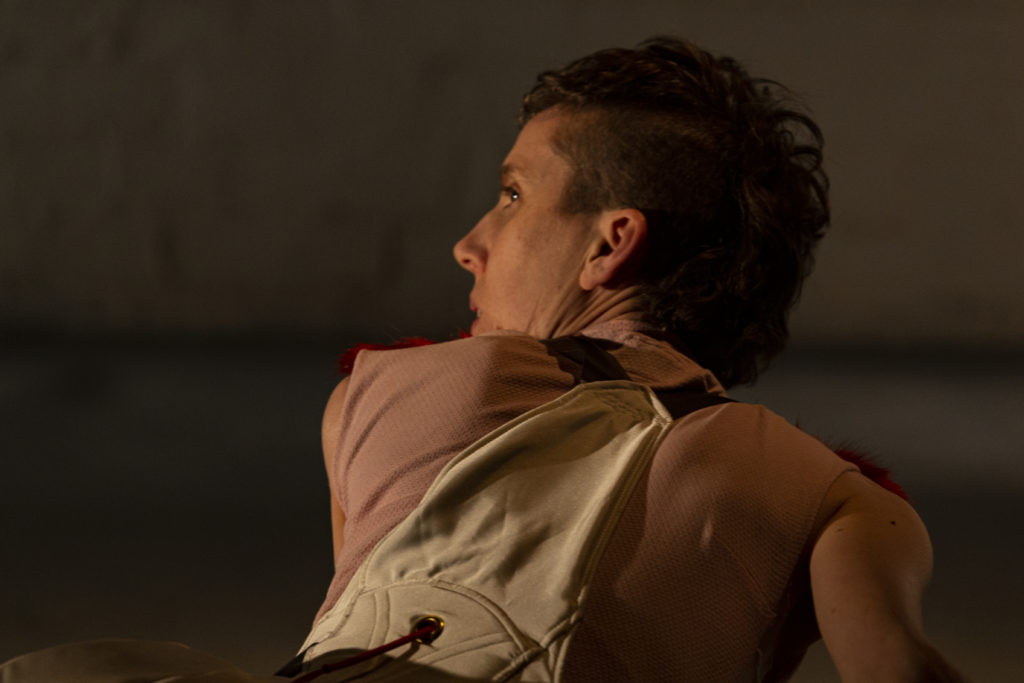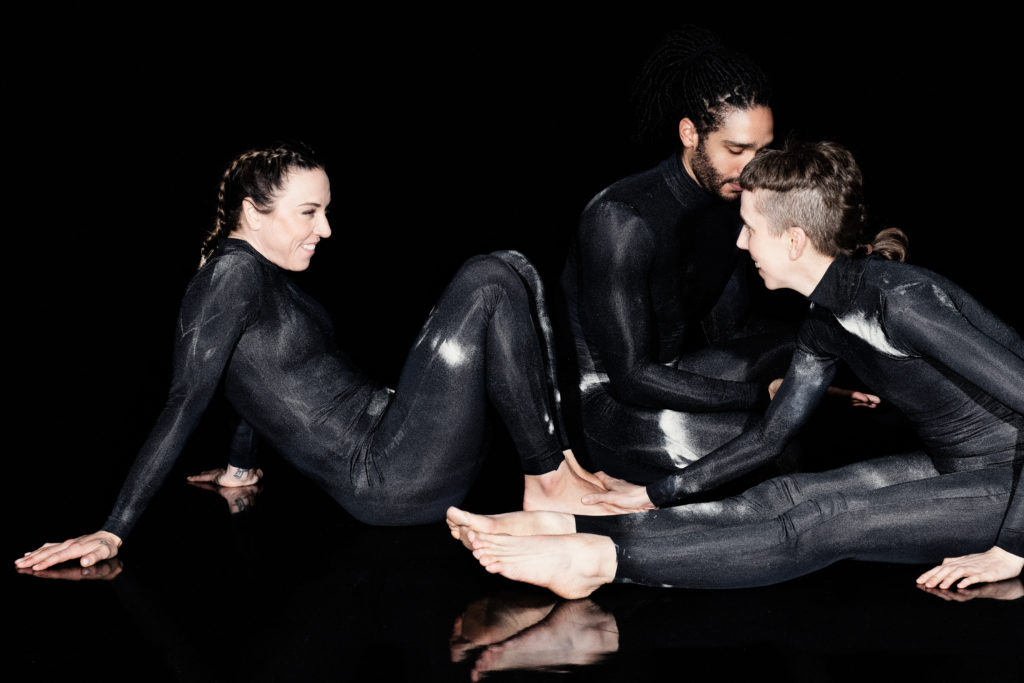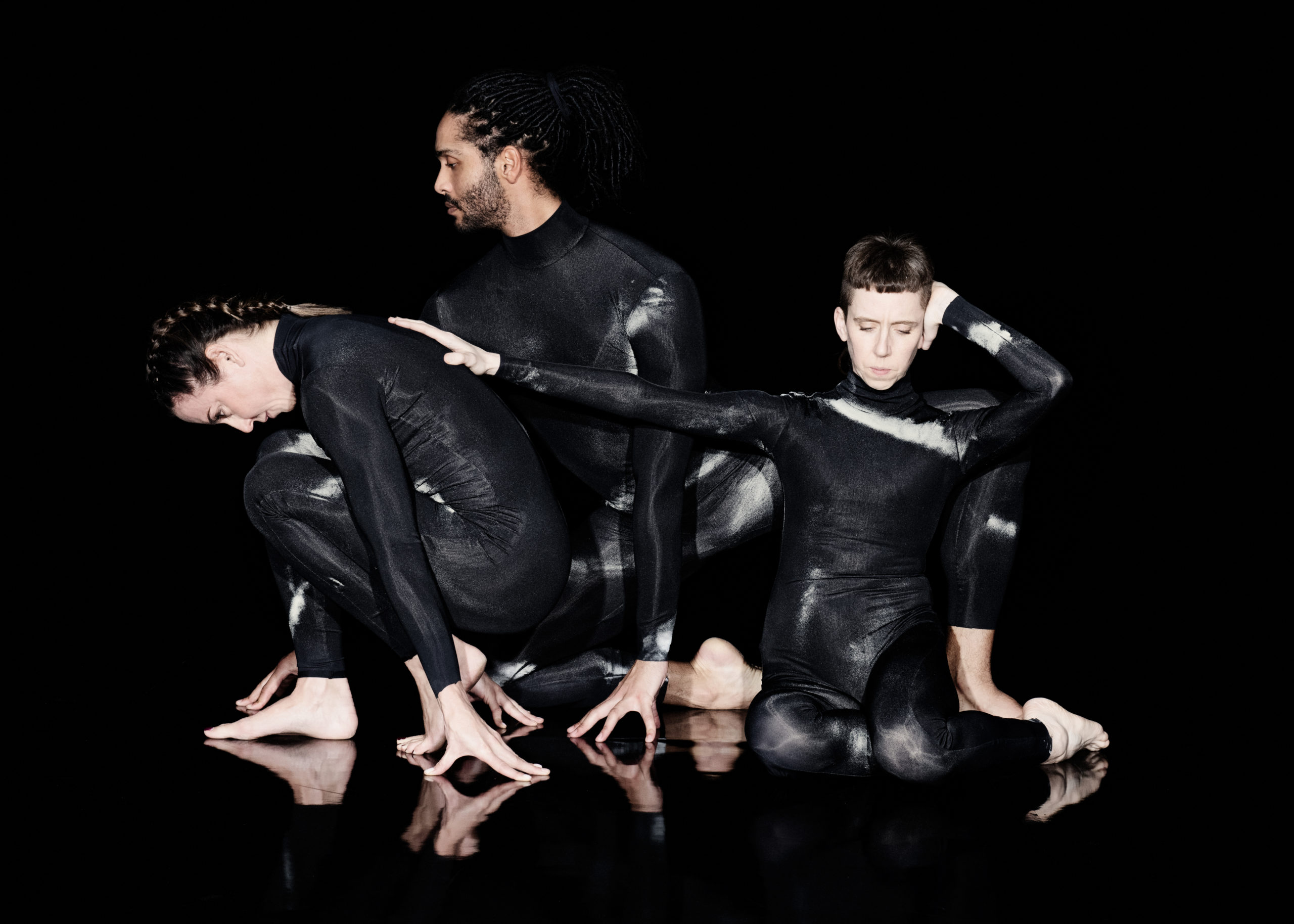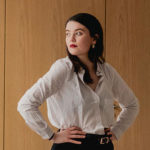Jules Cunningham on Collaborating With Spice Girl Mel C on a New Concert Dance Work
British dance artist Jules Cunningham’s latest work, how did we get here?, explores the memories and emotion held in the bodies of its three performers: Cunningham themself, Harry Alexander and—wait for it—Spice Girl Melanie C.
Cunningham (who uses they/them pronouns) was a longtime performer with Merce Cunningham (no relation) and then with Michael Clark. Now a choreographer in their own right, they make works that bear traces of their dance heritage—notably, a preference for classical lines and mathematical spatial structures—but, unlike their former mentors’ impersonal performances, their choreography is distinctly personal and intimate. “I make what I need in order to survive,” says Cunningham, who has been a New Wave Associate at Sadler’s Wells since 2018. “It’s necessary for my being to move and express things through my body. I can’t separate it from life.”
Pop icon Melanie C may seem like an unlikely collaborator for an avant-garde choreographer like Cunningham. Yet through their shared creation process, the result of which will premiere at Sadler’s Wells on January 19, they’ve discovered a lot more similarities than one might think.
When and why did you start to focus on making your own work?
It’s hard to make your own work when you’re dancing for someone else. You’re so steeped in the movement of that choreographer. It takes over your body and self. In 2015, I finished a contract with Michael Clark and had a yearlong break before we were scheduled to do anything else together. I wanted to take a bit more agency over myself and my body. As a dancer, you sometimes feel like you’re owned by another person. I wondered how I would move and be myself when someone else wasn’t asking me to do something.

Your latest work, how did we get here?, premieres at Sadler’s Wells on January 19. Where did the initial idea for this project come from?
I had a meeting with Sadler’s artistic director, Alistair Spalding, last year. He asked me if there was anything I wanted to work on. I just said, “I’d really like to work with Mel C from the Spice Girls.” It was something I’d been thinking about for quite a while, but I don’t think I was very clear about why. She was really good on “Dancing with the Stars,” so she was in my head because of that. We’re also both from the same part of North West England, near Liverpool.
Working with a prominent pop culture figure will hopefully attract audiences who might not normally come to see contemporary dance. Was this a motivating factor for you?
I didn’t think about that initially, but since we’ve announced the project it’s been amazing to see all the different groups of people who are excited about it. A lot of young people are interested, so are the LGBTQIA community—Mel has a big following there—different generations of Spice Girls fans, and, of course, the existing Sadler’s audience. I think there’s going to be a really nice mixture of subcultures.
When did you first meet Mel C and start working on the project?
I met her at Sadler’s Wells a couple of weeks after my meeting with Alistair. We went into the studio together a few days later. I initially asked Harry Alexander, who I worked with in Michael Clark Company, to come to the rehearsals too because I was so nervous! There was something about our bodies and personalities being together in that space that really worked.
What key similarities and differences did you notice between you?
We all did ballet as kids at local dance schools. Mel and Harry also both trained at Bird College in Kent, which has more of a musical theater focus. Of course, there are major divergences in our experiences, but this meant we had a shared basis to start from. We did Cunningham warm-ups, learnt material and devised stuff together. It was really important for me not to make Mel and Harry just do exactly what I told them. I wanted to find out where they were, and how I could come into their worlds, too.

What surprised you during the creation process?
It’s been a lot more emotional than I thought it would be. We’re all quite sensitive people. Things we’ve talked about and things we’ve tried physically have brought up a lot of feelings, but it feels like a really safe environment. We’re able to hold space for each other in a really nice way.
Will the piece be quite autobiographical?
It’s about what’s held in the body: our dance experiences and our life experiences, as well. The performance is about being present in every moment of being and dancing, like all of your life is in that moment. It’s a lot to feel and go through.
Do you think there’s a lack of awareness in the general public of how bodies can act as archives and vessels of physical knowledge?
It’s hard to understand if you don’t live in your body. Most people live in their heads. This question makes me think of The Body Keeps the Score, a book by Bessel van der Kolk about the effects of psychological trauma. Being a dancer is quite traumatic. You go through and take on a lot, physically and emotionally. I think the intelligence of the body is underestimated.
What will the soundtrack of the piece be like?
Because Mel C is a pop star, I feel like people expect the work is going to be very showy and performative. Actually, it’s quite quiet and felt. A lot of the sound that we’ve come up with is very much like that. We’re kind of thinking of it as an album, and using that to inspire the structure of the work. We’ve been creating sections and working on the sound for each of them. It’s almost like creating songs.
What about the design?
We’re staging the piece on the main stage but in the round. Boris Charmatz’s [terrain] infini was set up like this when it was performed at Sadler’s last year. I really liked how intimate it was, and how it enabled the audience to see things from different directions.
Do you have any hopes for the future of the project? Is there any potential for touring after the premiere at Sadler’s?
It would be cool if we could tour. I think we’d just have to be very clear about it because of everybody’s busy schedules.





